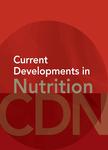版权所有:内蒙古大学图书馆 技术提供:维普资讯• 智图
内蒙古自治区呼和浩特市赛罕区大学西街235号 邮编: 010021

作者机构:Cardiovascular Nutrition Laboratory Jean Mayer USDA Human Nutrition Research Center on Aging at Tufts University USDA ARS Beltsville Human Nutrition Research Center Diet Genomics and Immunology Laboratory Laboratory of Mucosal Barrier Pathobiology Department of Pathology Brigham and Woman's Hospital and Harvard Medical School Nutrition and Cancer Laboratory Jean Mayer USDA Human Nutrition Research Center on Aging at Tufts University Section of Preventive Medicine and Epidemiology Boston University School of Medicine Intercollege Graduate Degree Program in Physiology and Department of Nutritional Science Pennsylvania State University
出 版 物:《Current Developments in Nutrition》
年 卷 期:2020年第4卷第SUPPL 2期
页 面:4141182-4141182页
摘 要:AbstractObjectivesHigh RNA quality is a prerequisite for accurate PCR and sequencing results. Dissecting a specific tissue fraction from frozen samples while maintaining RNA quality is challenging. Starting with frozen pig jejunum segments, we describe a novel method to isolate epithelial cell RNA while minimizing contamination with smooth muscle cell RNA. MethodsJejunum tissue segments from Ossabaw pigs ( N = 30) were snap-frozen in liquid nitrogen upon harvest from a diet-statin study and stored at –80°C. At the time of RNA isolation samples were incubated in prechilled RNA later-ICE at –20°C for 24 hours, opened longitudinally, and epithelium cleanly separated from the muscle layer using a scalpel and tweezers. Total RNA was extracted from the epithelium using TRI-reagent. RNA Quality Indicator (RQI) of total RNA was measured using Experion RNA StdSens Analysis kit. RNA-sequencing was performed on Illumina NextSeq 500 platform. Raw sequencing data were aligned to the domestic pig ( sus scrofa 11.1) reference genome and applied to subsequent analyses. xCell, a gene signature-based tool trained by thousands of single cell types from various sources, was used to estimate enrichment of epithelial cells (target) and smooth muscle cells (contamination) across samples. A Student t-test was used to compare the enrichment scores of these two cell types between the current method and a traditional method (small jejunal pieces collected at necropsy and stored frozen until RNA isolation). ResultsRQI ranged from 8.6 to 9.7, above the standard for RNA sequencing (RQI 8). The enrichment score of epithelial cells was significantly higher in the current method (mean = 0.030, SD = 0.006) compared to the traditional method (mean = 0.016, SD = 0.013) ( P 0.0001). The enrichment score of smooth muscle cells was significantly lower in the current method (mean = 0.043, SD = 0.035) compared to the traditional method (mean = 0.13, SD = 0.093) ( P 0.0001). ConclusionsThe current met